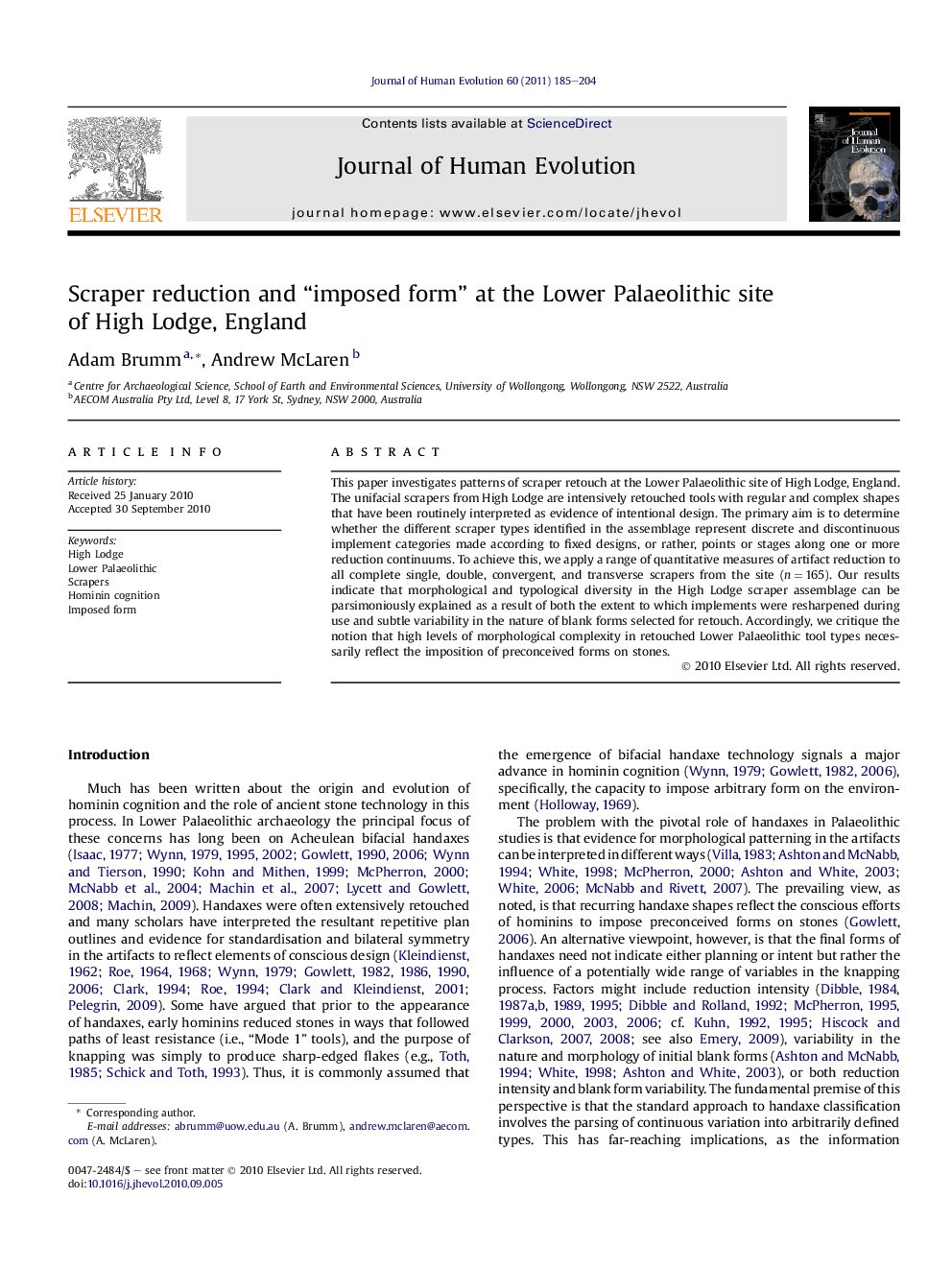| Article ID | Journal | Published Year | Pages | File Type |
|---|---|---|---|---|
| 4556680 | Journal of Human Evolution | 2011 | 20 Pages |
This paper investigates patterns of scraper retouch at the Lower Palaeolithic site of High Lodge, England. The unifacial scrapers from High Lodge are intensively retouched tools with regular and complex shapes that have been routinely interpreted as evidence of intentional design. The primary aim is to determine whether the different scraper types identified in the assemblage represent discrete and discontinuous implement categories made according to fixed designs, or rather, points or stages along one or more reduction continuums. To achieve this, we apply a range of quantitative measures of artifact reduction to all complete single, double, convergent, and transverse scrapers from the site (n = 165). Our results indicate that morphological and typological diversity in the High Lodge scraper assemblage can be parsimoniously explained as a result of both the extent to which implements were resharpened during use and subtle variability in the nature of blank forms selected for retouch. Accordingly, we critique the notion that high levels of morphological complexity in retouched Lower Palaeolithic tool types necessarily reflect the imposition of preconceived forms on stones.
